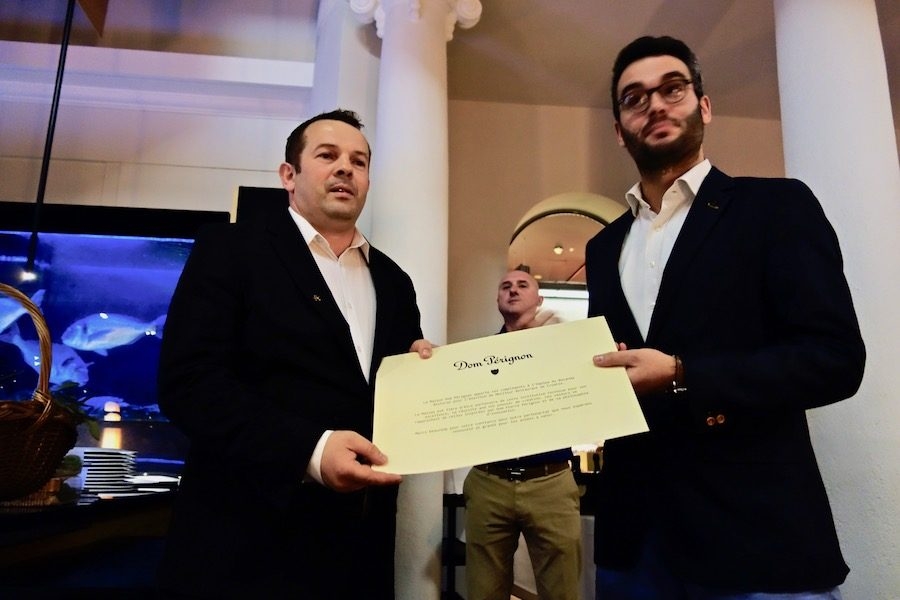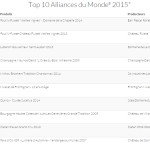Besides preparing first class wine workshops, Alhambra restaurant from Lošinj is also constructing a vertical of serious Bordeaux wines, with one of the champagnes offered being Larmandier Bernier. The Bevanda in Opatija has nearly an encyclopaedia of wine on its list, with a large number of relevant foreign wines available in Croatia, and a certain amount of valuable older bottles. Bevanda is also an ambassador for Dom Perignon, while Miraval is served around its pool for relatively small money. Plavi Podrum is full of various Puligny Montrachet, Mersault, luxury Pouilly Fume and first rate champagnes. Owner and sommelier Daniela Kramarić is in constant search for classic foreign wines, such as Bordeaux, which would satisfy the criteria of reasonable price and superior quality. The Navis wine list has Sori San Lorenzo at one of the best prices in the world, and a line of Leflaive wines, currently being upgraded. These four restaurants naturally also offer most of the important Croatian wines, and a solid selection of orange wines from the Slovenian-Italian border. Only Noel and Dubravkin Put in Zagreb can boast equally ambitious wine lists, while in Istria we would mention only Wine Vault, whose huge list was created many years ago. It contained until recently many wines which were not drinkable anymore.
Why are wine lists of Kvarner restaurants and hotels so much more ambitious and exciting than wine lists of other parts of Croatia, including Zagreb, the national restaurant centre? For a line of reasons, reaching into the 1990s. The Amfora of Josip Tariba, father of Daniela Kramarić, is one of the first Croatian restaurants who built their wine list on foreign wines. When it opened some twenty years ago, Plavi Podrum followed and constantly upgraded Amfora’s example. Furthermore, in mid-1990s Opatija was naturally the most important coastal market for Croatian wine importers, as Dalmatia was still recovering from the war, while Istria still had no luxury hotels or superior gastronomy. With the exception being Valsabbion, one of the most important Croatian restaurants in general. Due to a combination of historical and social circumstances Kvarner began to create a consumer culture of superior wines which has luckily survived to date and set high criteria for all new ambitious restaurants.
For example, when Zoran Maržić began to renovate Bevanda ten years ago, the creation of a broad wine list was one of the priorities in building Bevanda’s new image. When Navis opened up two years ago, it was a given that its wine list cannot be based only on Croatian labels. Alhambra’s eccentrically ambitious wine list is conditioned by the profile of that luxury hotel and its guests, which are mostly ready to pay plenty. The ambition of Kvarner wine lists is directly linked to gastronomy. The Tourism Ministry declared Bevanda last year as Croatian restaurant of the year, while Plavi Podrum is the only Croatian restaurant which managed to enter the San Pellegrino list of 100 best restaurants in the world.
In the first decade of the 2000s, right next to Plavi Podrum was Le Mandrač by Denis Zembo. With many faults, that restaurant did insist on edgy and modern cooking. Finally, in the beginning of 2000s the Kukuriku in Kastav had a deserving reputation as one of the best Croatian restaurants. Kvarner obviously amassed a critical amount of ambition and knowledge on food and wine which established higher criteria for wine lists than in other parts of Croatia. We need to add to all of this the key element without which food and wine would be pointless: restaurant visitors. Kvarner is close enough to various emitting destinations to attract off-season tourists from Italy, Slovenia and Austria, while the highway made Opatija an excursion site for Zagreb a while ago. It is very important to emphasise that the better Kvarner restaurants don’t live off local guests, which favourably affects their offer. But we should not be fooled.
Despite lavish wine lists, even the leading Kvarner restaurants sell most of Malvazija. The sale of one bottle of Malvazija brings in ten to twenty euro. Selling one bottle of Sori San Lorenzo or Perignon P2 brings in several hundred euro. Hence Kvarner restaurants which are professionally equipped to offer superior wines, will continue to boost their wine lists.
For the original and more from Plava Kamenica, click here.












